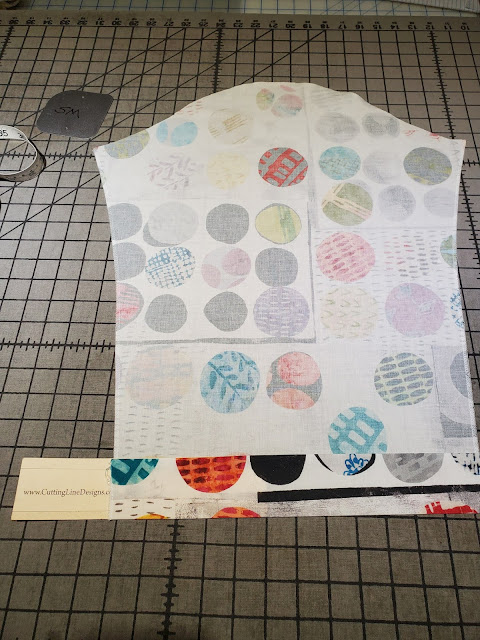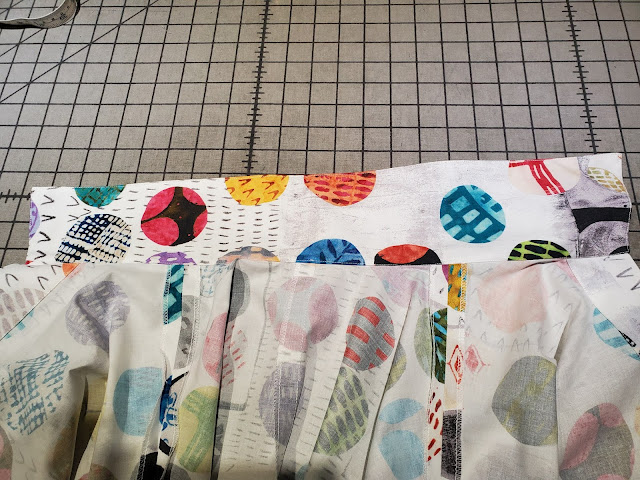Hi everyone,
This morning I experimented with our new vegan leather. We have it in 2 colors: tan and blush. I haven't sewn with it myself, and I thought some of you might not have tried it.
So I did some quick experimenting and want to show you my results.
First, I tried pressing the fabric. A warm iron on the back side of the fabric is okay, but don't try pressing on the right side. I tried it, again using a warm temp and a light touch, but the iron just wants to stick, rather than gliding across the surface. I found that finger-pressing worked well--I kept flattening the surface of the fabric as it moved through the sewing machine.
Then I tried stitching. My machine has a leather setting, so I clicked it just to see what it advised. It lowered the pressure foot pressure and changed to a 3.0 stitch length. I found that both adjustments are important. In fact, I manually lowered the presser foot pressure even more. Practice on scraps to see what settings work best.
Next, I changed to a teflon foot. (I did try my usual metal foot, but it stuck to the fabric.) Here's what mine looks like:
Some manufacturers sell the feet; others sell strips of Teflon to stick on a foot. A Teflon foot will really help with this fabric.
Stitching a seam with the fabric right side to right side was easy.
I did use my fingers to gently help the fabric move through the machine. (Again, lower that presser foot pressure!) The back side of the fabric slides through the machine easily.
Then I tried topstitching. I could not use a metal topstitching or edgestitching foot--mine don't have Teflon on them. So I kept the Teflon foot and aligned the fabric with the edge of the foot for topstitching.
I had fingerpressed the seam first. I found that it helped to once again gently use my fingers to help the fabric move under the foot. The stitching was easy, but I would practice on scraps to get the feel of it.
I aligned with a different corner of the foot for edgestitching.
Results are pretty good. I used contrast thread so you could see my results. However, it shows any little waver in the stitching, so I moved on to matching thread.
I found that top and edgestitching were easier when only the wrong side of the fabric was next to the bed of the machine. So I trimmed one seam allowance to about 1/8" and left the other one flat to encase the trimmed one. This worked better. The fabric moved through the machine more easily and there was no problem with bulk because I had trimmed one seam allowance so closely.
First, I tried just topstitching this seam. That worked well. Then I tried also edgestitching a portion of it, and that also worked well.
Overall, I think a couple of simple adjustments will allow you to easily use this fabric. I think a slightly slower pace is important, allowing you to help your machine do a good job. So:
Use a Teflon foot. Lengthen to a 3.0 stitch length. Reduce the presser foot pressure quite a bit. Experiment with your settings.
I would choose a pattern without too many details for this fabric, which is fabulous looking and will make a beautiful garment.
I do think seams will need to be topstitched to keep them flat, so keep that in mind as you design the look you want.
If you need to topstitch a collar or facing, go slowly. The right side of the fabric will be against your Teflon foot and on the stitch plate of your machine on the underside of the collar. Practice on scraps first and you'll have good results.
Post your pretty garments on the Forum to inspire the rest of us!!
























































